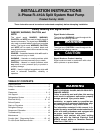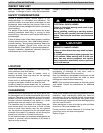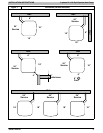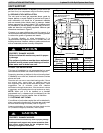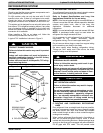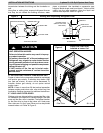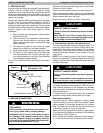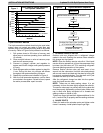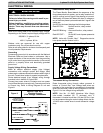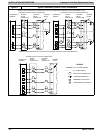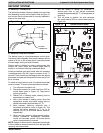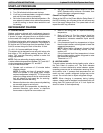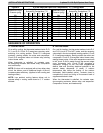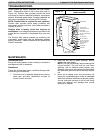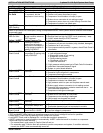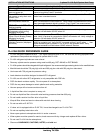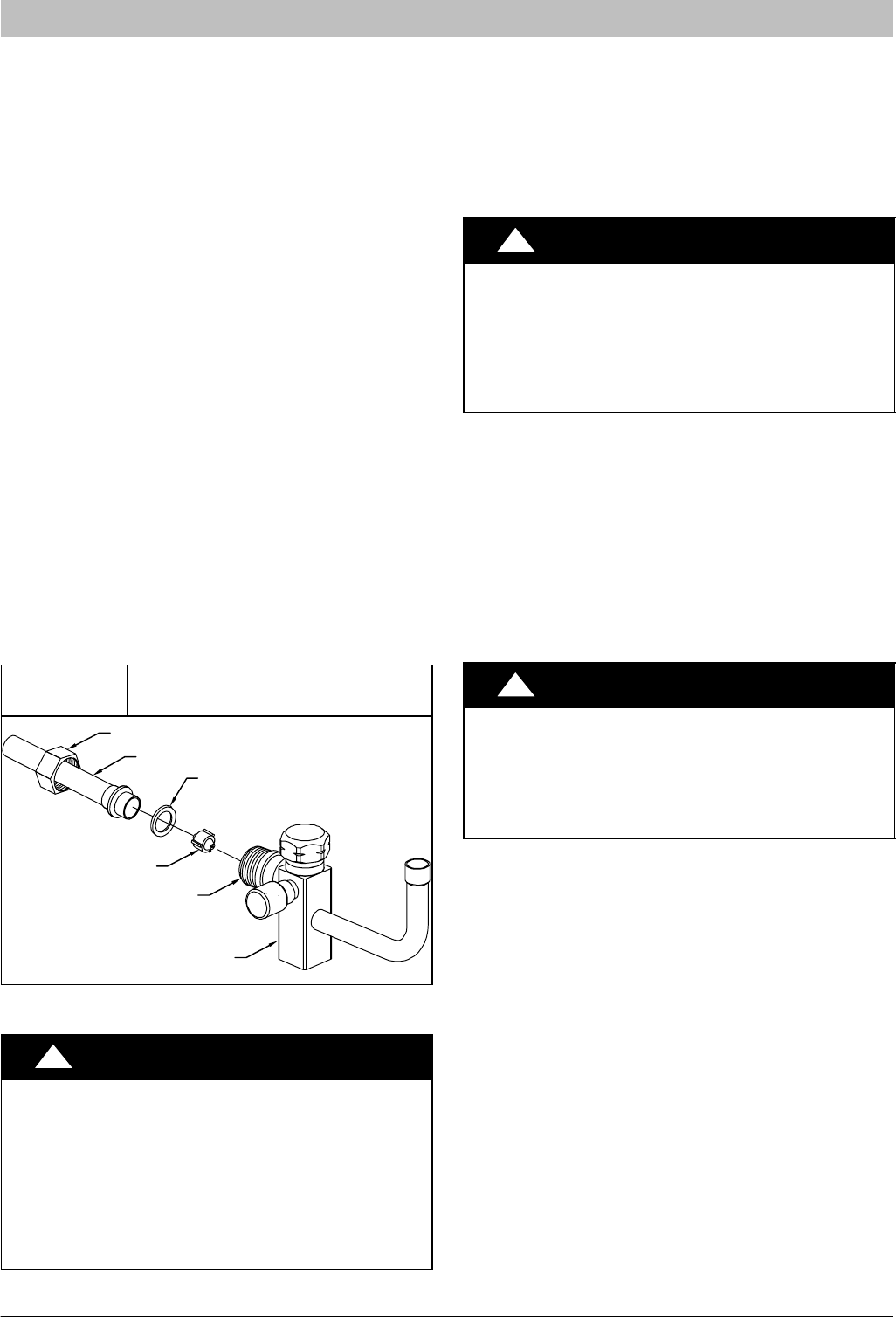
INSTALLATION INSTRUCTIONS 3-phase R-410A Split System Heat Pump
506 01 5102 00 7
F. SERVICE VALVES
Service valves are closed and plugged from the factory.
Outdoor units are shipped with a refrigerant charge
sealed in the unit. Leave the service valves closed until all
other refrigerant system work is complete or the charge
will be lost. Leave the plugs in place until line set tubing is
ready to be inserted.
Heat pumps require a piston metering device in the liquid
service valve for proper heating operation. Piston is
shipped in the piston body of the liquid service valve,
temporarily held in place with a plastic cap. Do not remove
the plastic cap until line set tubing is ready to be installed.
Refer to Figure 6 and follow these steps for piston
installation:
1. Remove plastic cap holding piston in piston body of
liquid service valve.
2. Check that piston size (stamped on side of piston)
matches with number listed on unit rating plate.
Return piston to piston body of liquid service valve
(either direction).
3. Find plastic bag taped to unit containing copper
adapter tube, brass nut, and plastic washer.
4. Install plastic washer in the seat inside piston body.
5. Fit brass nut onto adapter tube and install tube
onto liquid service valve. Tighten nut finger tight,
then wrench additional ½ turn only. Over tightening
may damage the plastic washer.
Service valve bodies are brass and suction tube stub is
copper.
Figure 6
Liquid Service Valve with Piston
and Adapter Tube
PISTON BODY
LIQUID SERVICE VALVE
PISTON
PLASTIC WASHER
ADAPTER TUBE
BRASS NUT
G. BRAZING CONNECTIONS
!
WARNING
FIRE HAZARD
Failure to follow this warning could result in per‐
sonal injury, death, and/or property damage.
Refrigerant and oil mixture could ignite and burn
as it escapes and contacts brazing torch. Make
sure the refrigerant charge is properly removed
from both the high and low sides of the system be‐
fore brazing any component or lines.
Clean line set tube ends with emery cloth or steel brush.
Remove any grit or debris.
Insert line set tube ends into service valve tube stubs.
Apply heat absorbing paste or heat sink product between
service valve and joint. Wrap service valves with a heat
sinking material such as a wet cloth.
Braze joints using a Sil-Fos or Phos-copper alloy.
!
CAUTION
PRODUCT DAMAGE HAZARD
Failure to follow this caution may result in product
damage.
Braze with Sil-Fos or Phos-copper alloy on cop‐
per-to-copper joints and wrap a wet cloth around
rear of fitting to prevent damage to TXV.
H. EVACUATING LINE SET AND INDOOR COIL
The unit is shipped with a factory refrigerant charge. The
liquid line and suction line service valves have been
closed after final testing at the factory. Do not disturb
these valves until the line set and indoor coil have been
evacuated and leak checked, or the charge in the unit
may be lost.
NOTE: Do not use any portion of the factory charge for
purging or leak testing. The factory charge is for filling the
system only after a complete evacuation and leak check
has been performed.
!
CAUTION
PRODUCT DAMAGE HAZARD
Failure to follow this caution may result in product
damage.
Never use the outdoor unit compressor as a vacu‐
um pump. Doing so may damage the compressor.
Line set and indoor coil should be evacuated using the
recommended deep vacuum method of 500 microns. If
deep vacuum equipment is not available, the alternate
triple evacuation method may be used by following the
specified procedure.
If vacuum must be interrupted during the evacuation
procedure, always break vacuum with dry nitrogen.
Deep Vacuum Method
The deep vacuum method requires a vacuum pump
capable of pulling a vacuum to 500 microns and a vacuum
gauge capable of accurately measuring this vacuum
level. The deep vacuum method is the most positive way
of assuring a system is free of air and water.
Watch the vacuum gauge as the system is pulling down.
The response of the gauge is an indicator of the condition
of the system (refer to Figure 7).
With no leaks in the system, allow the vacuum pump to
run for 30 minutes minimum at the deep vacuum level.



